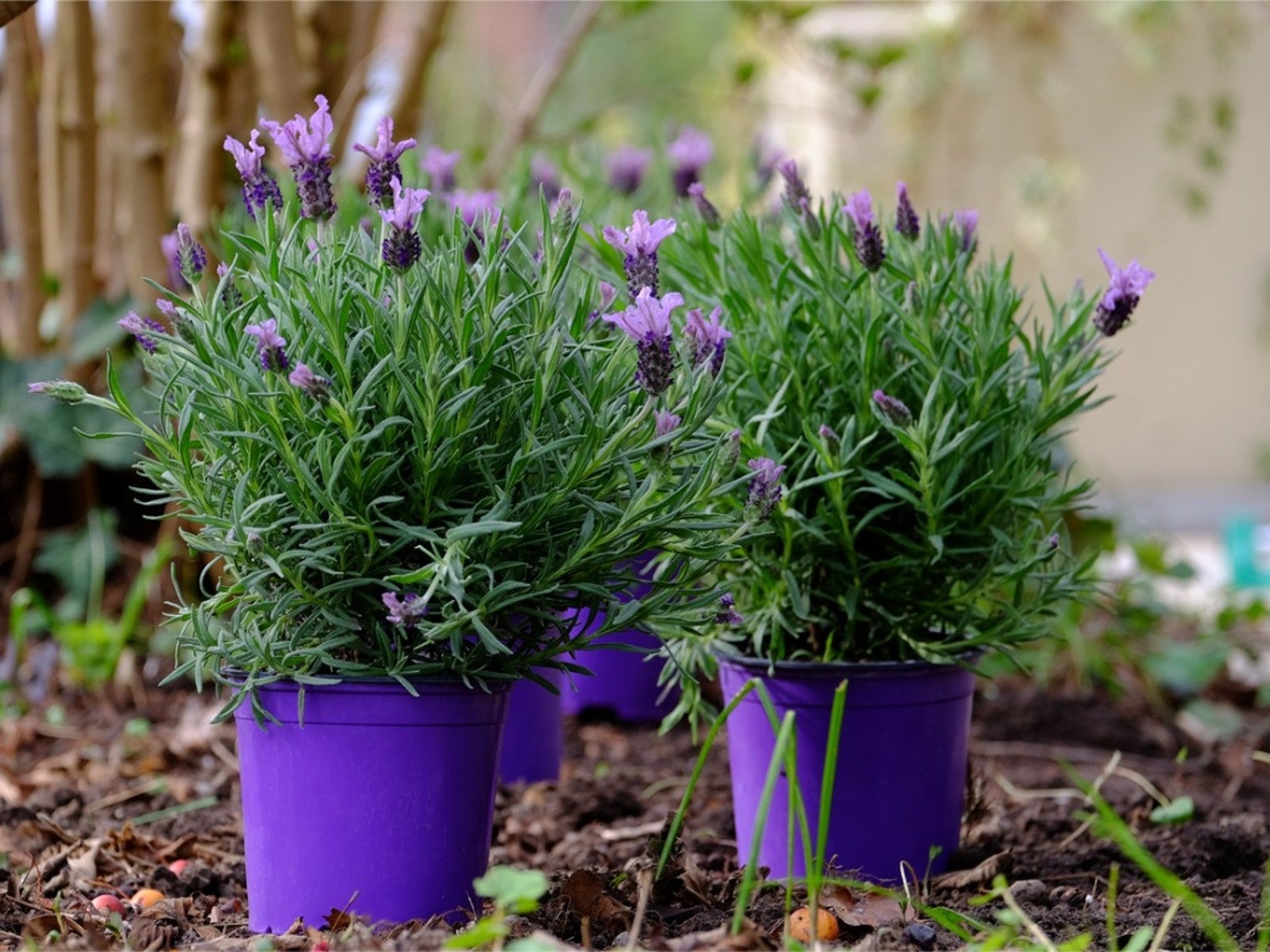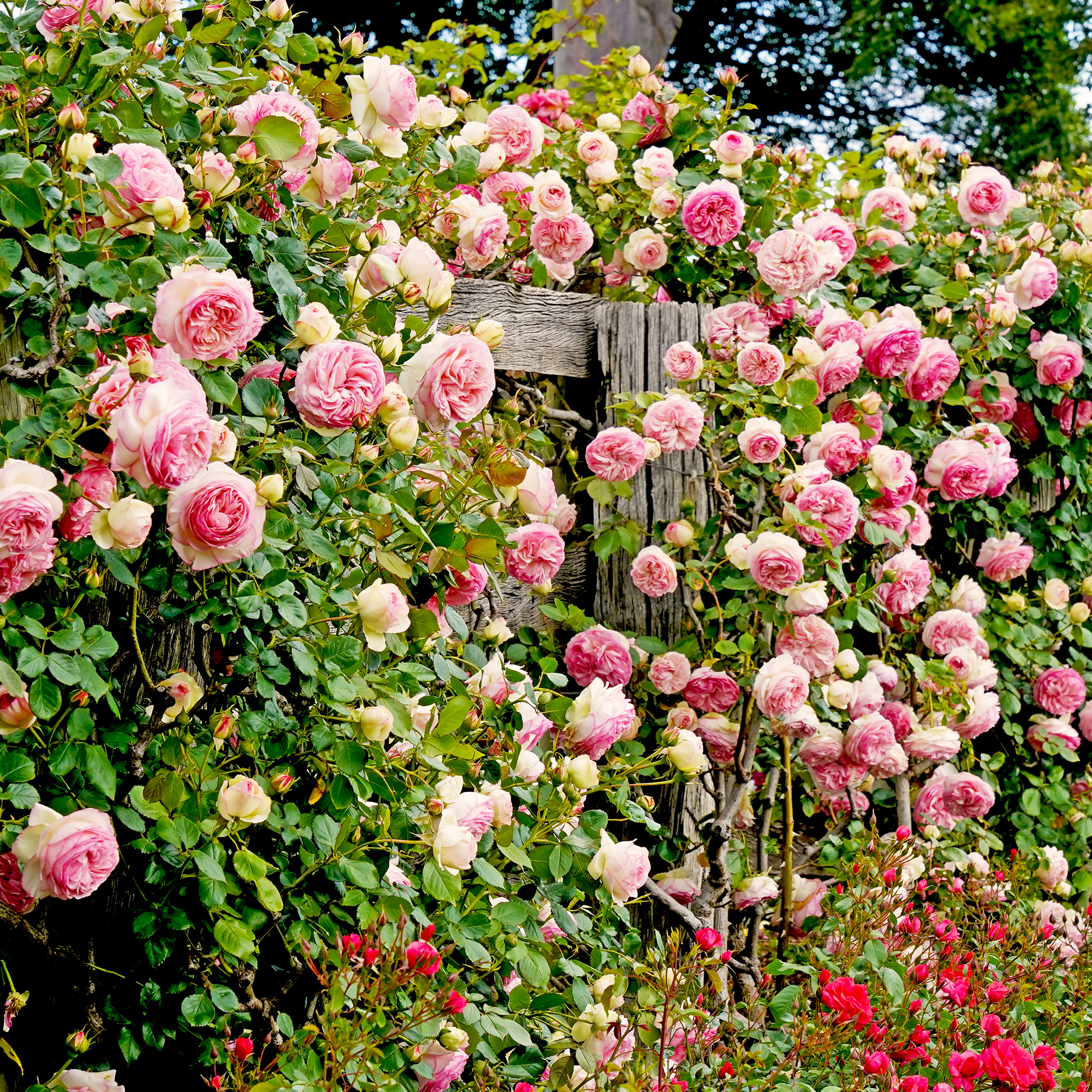Lavender Container Care: Tips On Growing Lavender In Pots


Tonya Barnett
Lavender is loved by herb growers and flower farmers for its delicate aromatic fragrance and soothing properties. In addition to its relaxing properties when ingested, lavender is used in soaps, cosmetics, and is purportedly able to repel insects within companion planting. Lavender has a stellar reputation as a perennial herb, whether grown in the garden or in a pot.
While it can be hardy and prolific, lavender requires specific cultural conditions to thrive. If you’re wondering how to grow lavender in pots and containers, learn more here about how.
Can Lavender Grow in Pots?
Lavender is a good choice for container growing. Growing lavender in pots may be especially helpful for gardeners with unsuitable soil conditions or limited access to green space. Containerized lavender also allows for moving the plant when weather conditions become too harsh, and it can be winterized indoors, such as in a basement.
Lavender pots need to be large enough for the soil to insulate the plants’ roots and still drain easily. Lavender in planters also makes an attractive addition to the landscape, adding both color and scent near porches or patios. Despite their adaptability, to grow potted lavender plants it’s important to consider several specific points related to their care.
Starting Lavender Plants
Lavender can be grown from seed or from cuttings. Seeds should be placed on top of sandy soil and can be covered lightly with a layer of perlite. The planted seeds should be kept warm until they sprout, even using a warming mat if necessary.
Cuttings should be taken from existing plants just below a node where a set of leaves join the stem. Dip them in root hormone, and insert into warm, moist, sandy soil.
No matter how you start your container grown lavender plants, it’s important to choose the right potting mix. Lavender doesn’t like to be damp, but it does need water. This means good drainage is essential to lavender container care. If the pot you choose doesn’t have plenty of drainage holes in the bottom, drill a few more.
Gardening tips, videos, info and more delivered right to your inbox!
Sign up for the Gardening Know How newsletter today and receive a free copy of our e-book "How to Grow Delicious Tomatoes".
If you plan on keeping the pot inside, you’ll need a saucer to catch the water, but avoid choosing pots with saucers attached to the bottom. Lavender cannot stand wet feet. Choose a sandy, alkaline, well-draining potting mix with slow-release fertilizer pellets.
How to Care for Lavender Plants in Pots
Before planting, you should decide which variety to plant. While most cultivars will perform well in pots, it’s important to consider the plant’s size at maturity relative to the container. Dwarf varieties of lavender are ideal, as they often require less time dedicated to their maintenance, and will seldom outgrow their pot.
Lavender plants like heat, and many varieties won’t survive a cold winter, so planning ahead for how and where to situate your pots or other containers is helpful.
Best Soil for Lavender in Pots
Growing lavender in containers requires special attention to soil. Though it is possible to grow lavender in a quality potting soil, proper drainage is key in making certain the plants will be able to thrive. Experts suggest filling lavender containers with a mixture of compost, sand and/or gravel for the best results. Adding lime at planting time may also be helpful as a means to raise the pH level of the soil, which should be only slightly alkaline.
Water Requirements
Lavender is native to the Mediterranean region of Europe where it’s warm and somewhat dry. Established lavender plants prefer soil that is allowed to dry between each watering. Since containers are known to dry quickly, plan for daily or weekly irrigation. This is especially true in regions that are hot or experience sparse rainfall throughout the growing season. Be sure to avoid wetting the leaves or foliage when watering containerized lavender. Most importantly, never let the plant sit in water, and don’t overwater. Well-draining soil, like what's found its natural habitat, will lend longevity to the plant.
Light Requirements
Potted plants should be situated where they can receive 6 to 8 hours of direct light each day. Indoors, a south-facing window works best and a containerized lavender plant might appreciate a grow light if natural light isn’t sufficient. In any case, the more bright warm light the plant receives, the more it will flower. Indoors, the plant enjoys temperatures between 60 to 70 degrees during the day, and it does not appreciate drafty or humid conditions.
Pruning Lavender in a Container
Pruning lavender to help maintain the desired size and shape of the plants will also promote flowering. Trim back new growth in early spring, making certain to avoid the woody parts of each stem. Dead or damaged stems can also be removed at this time.
You can do some additional pruning of lavender plants in the summer after the plants have finished blooming. Deadheading after the first flush of flowers can help to encourage repeat blooming and promote new, bushier growth.
Best Lavender for Pots
Some varieties of lavender work well in pots and thrive if properly cared for. English lavender tends to be more cold-hardy. Dwarf varieties are great in pots. Here’s a list of just a few kinds of lavender that do well in containers:
- Dwarf Munstead English Lavender
- Lacy Frills English Lavender
- Provence French Lavender
- Thumbelina Leigh English Lavender
- Wee One English Lavender
- Anouk Spanish Lavender
Your local garden center can advise you on the best cultivars for your climate, or contact your area’s local extension service for more specific information on which types of lavender are best for your region.

The only child of a horticulturist and an English teacher, Liz Baessler was destined to become a gardening editor. She has been with Gardening Know how since 2015, and a Senior Editor since 2020. She holds a BA in English from Brandeis University and an MA in English from the University of Geneva, Switzerland. After years of gardening in containers and community garden plots, she finally has a backyard of her own, which she is systematically filling with vegetables and flowers.
- Tonya BarnettWriter
-
 8 Noteworthy Native Azaleas Every Gardener Should Know – And Grow!
8 Noteworthy Native Azaleas Every Gardener Should Know – And Grow!Native azaleas offer brilliant blooms in a range of colors and sizes. Here are a few favorites to get inspired and start working on a native shade garden!
-
 Growing Climbing Roses: How To Create Elegant Displays With Maximum Blooms
Growing Climbing Roses: How To Create Elegant Displays With Maximum BloomsMaster the art of growing stunning climbing roses with this essential guide to creating vibrant, fragrant walls and structures all summer long.